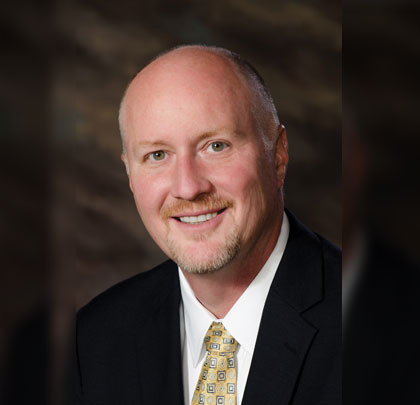Grundfos’s Greg Towsley on the rising demand for system-wide energy savings
At the 2014 ASHRAE Winter Conference, Greg Towsley, director of regulatory and technical affairs for Grundfos, presented his paper “Towards the ASHRAE 2020 Vision with an Efficiency Increase to a Pump Product Range,” addressing the shared responsibility for energy efficiency in today’s marketplace. In the following interview, Mr. Towsley expanded on these ideas for Modern Pumping Today.
Modern Pumping Today: How do you see the link between OEMs and energy consumers changing?
Greg Towsley: As costs for energy and water continue to rise, and the desire for more efficient buildings and systems increases, consumers are going to demand that OEMs provide more efficient equipment. For some equipment types, they have nearly reached maximum technology and maximum efficiency. So the next step is to look at the system and how the each of the components work together to optimize and maximize system efficiency.
MPT: What are some examples of how manufacturers, like Grundfos, are meeting this challenge?
Greg Towsley: First, manufacturers must ensure that the efficiency of the basic equipment, in our case the pumps, have been maximized for the services they are applied. The double suction horizontal split case pumps referenced in the ASHRAE paper is an example of where we took the initiative to analyze that product and reengineered it to maximize the efficiency. The next opportunity that manufacturers can take is to integrate individual components together to improve their operation. The current draft of the Standardization Roadmap – Energy Efficiency in the Built Environment prepared by the American National Standards Institute identifies integrated control in heating and cooling systems as a gap in improving the efficiency of buildings. Again, Grundfos has taken the initiative to integrate components to help systems improve efficiency: Alpha circulators, Magna inline pumps, Hydro MPC packaged pumps systems, and the recently launched Grundfos e-products, where we have integrated our Grundfos MLE motors with integrated VSD on some of our PACO pumps.
MPT: As the market demand for “ultra-high-efficiency equipment” grows, what options will manufacturers have at their disposal?
Greg Towsley: In the case of pump manufacturers, there are many tools that have been improved over the years: computational fluid dynamics (CFD) for hydraulic design, finite element analysis (FEA) for mechanical design, 3-D modeling for part and pattern design. Utilizing all of the most current tools together can help engineers design the most optimized product quicker and at lower costs. In addition, as new technology is developed in vertical markets, such as permanent magnet motors and controls, pump manufacturers can integrate them with the pump to meet the demand for “ultra-high-efficiency” solutions.
MPT: How important is performance testing for OEMs looking to develop ultra-high-efficiency equipment?
Greg Towsley: Although testing products to communicate the performance and efficiency occurs today, it can be expected that manufacturers will be more accountable to ensure that the products they provide meet that performance. Building energy codes and certifications are requiring reduced energy consumption. If the systems in the buildings are not meeting expectations, commissioning and auditing could identify those products that aren’t performing as expected. Specifically with pumps, it is expected that the current Department of Energy rulemaking activities for energy conservation standards for pumps will include a test procedure that discloses a pump’s performance.
MPT: What opportunities do you foresee will be available for manufacturers who are proactive in their approach to efficiency? What are the dangers of being left behind?
Greg Towsley: There is no doubt that manufacturers who are proactive will be the first to enter the market and gain awareness as a provider of high-efficiency solutions. Of course, there is a requirement of taking a business risk to make the investments to initiate the product improvement activities. But in the long term, those investments will provide the expected benefits not only for the manufacturer but also for the consumer. For those who delay in making the investments, they will be slow to gain entrance into the growing market requirement of energy efficient solutions. ■


